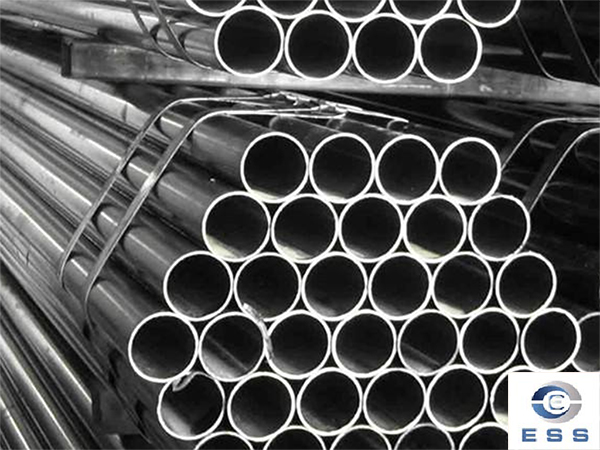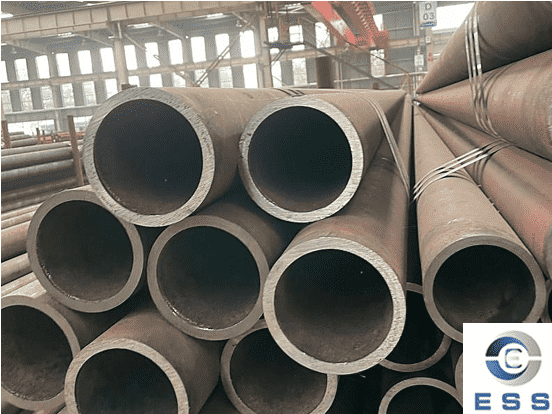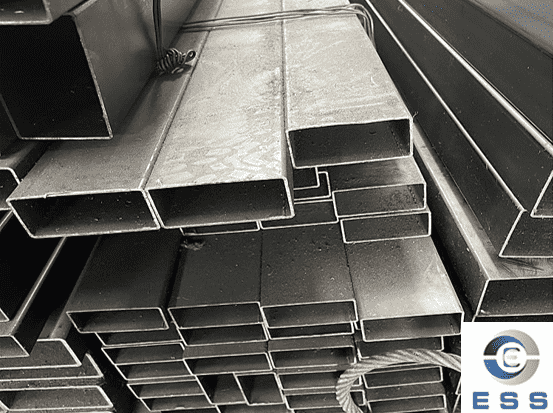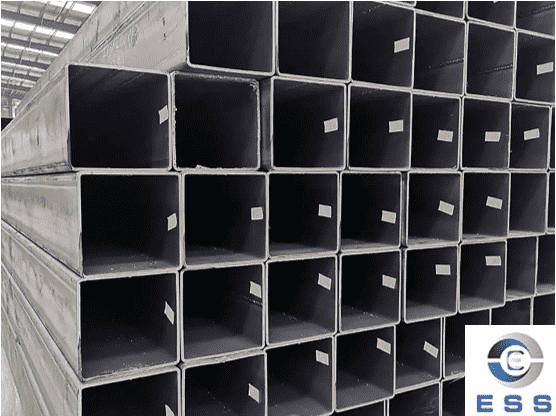Cutting method to eliminate stress of
seamless pipe

Seamless steel pipe is made of a whole round steel through holes, and there is no weld on the surface of the steel pipe, which is called seamless steel pipe. According to the production method, seamless steel pipe can be divided into hot-rolled seamless steel pipe, cold-rolled seamless steel pipe, cold-drawn seamless steel pipe, extruded seamless steel pipe, top pipe, etc.
In the customized production of seamless steel pipe, the diameter of the seamless steel pipe is compressed and its wall thickness will also change. The change of the diameter and ovality of the pipe body mainly depends on the sizing reduction. If the sizing reduction and temperature are properly adjusted, the ovality of the seamless steel pipe can be eliminated and the specified diameter size can be achieved, thereby improving the
mechanical properties of the seamless steel pipe. However, when the seamless steel pipe is sizing, residual stress will also be generated in the pipe body, reducing its mechanical strength. Therefore, in order to ensure the geometric shape of the pipe body and improve its mechanical strength, it is necessary to study the relationship between the reduction and temperature of sizing rolling and the residual stress distribution under the premise of meeting the specified geometric shape, so as to obtain the best sizing effect.
The residual stress, also known as internal stress, refers to the stress that remains inside the pipe after the external load of the pipe processing and manufacturing is removed. Residual stress is caused by uneven volume changes in the internal structure of the metal of the pipe. Its external factors come from hot working and cold working.
Pipes with internal stress are in an unstable state, and their internal structure has a strong tendency to return to a stable state without internal stress. Even at room temperature, the internal structure of the pipe is constantly changing until the internal stress disappears completely. In this process, the shape of the pipe gradually changes (such as warping) and loses its original accuracy. Therefore, during the pipe cutting operation, the "slow release" characteristics of residual stress should be understood, the causes of residual stress should be familiar, and the technical means of reducing or eliminating residual stress should be mastered to achieve better pipe cutting effect and cutting accuracy.
Before cutting seamless steel pipes, not only the size and allowable stress of seamless steel pipes should be considered, but also the location of the steel pipes and the influence of terrain and gravity factors on the pipe cutting operation should be checked, and the cutting speed and tool selection should be initially customized.
During the cutting process of the pipeline, a high temperature will be generated locally. At this temperature, the yield strength of the material decreases with the increase of temperature. An important feature of the tensile stress of the residual strip inside the material is that there is a balance between the yield degree of the material itself. Therefore, the decrease in yield strength leads to the break of the balance with the tensile stress of the residual strip. At this time, the stress of the welding residual strip inside the pipeline material decreases accordingly. The degree of decrease depends on the yield strength, the gravity of the pipeline and the change of terrain. As a result, the pipeline itself suddenly deforms and breaks before it is cut during the pipeline cutting process. From a microscopic point of view, it is because the stress peak has dropped to the yield strength level of the pipeline, the stress decreases, followed by the stress relaxation process caused by creep. On the surface, the pipe cutting machine clamps the knife and does not cut.
Pipe cutting is essentially the cutting of the metal of the pipeline wall. It is the process in which the pipeline is squeezed and rubbed by the pipe cutting machine tool, causing elastic deformation and plastic deformation on the surface of the pipeline, and the chips are separated from the pipeline wall. During the cutting process of the pipeline, the pipeline is subjected to cutting force, generating cutting heat and causing the cutting temperature to rise. After the cutting is completed,
the residual stress is eliminated on the surface of the pipeline wall, and the overall tensile force of the pipeline is enhanced, causing the stress of contraction or expansion of the pipeline wall after cutting.
Therefore, in the seamless steel pipe cutting operation, in addition to the operation methods specified in the "Pioneer Pipe Cutting Operation Process", the following points should also be done:
1. Select the appropriate pipe cutting machine tool according to the diameter and wall thickness of the pipe to be cut, calculate the effect of stress on the blade after cutting, and strengthen the observation of the cutting operation;
2. Appropriately reduce the speed of the hydraulic pump station to slow down the pipe cutting speed and reduce local heat in the pipe cutting operation;
3. Measure the ovality of the pipe, analyze and predict the key parts in the pipe cutting operation. Check the cutting status and cutting effect of key points in the pipe cutting operation;
4. When the pipe stress is large or the speed and power performance of the pipe cutting machine are more laborious in the cutting operation, rotate the feed screw to adjust the tool upward; or stop the cutting operation of the pipe cutting machine, use a triangular wedge to insert into the cutting seam of the completed pipe to reduce the stress on the tool and the pipe cutting machine, and then continue cutting.
5. Before cutting the pipe, you can use tools such as cranes to lift the pipe to reduce the weight of the pipe or the gravity imbalance caused by the terrain, and offset the stress of the pipe during the pipe cutting operation;
6. About 3mm after the pipe is about to be cut, the blade cutting depth can be appropriately increased to keep the pipe wall thin layer of 1-1.5mm, so that this thin layer continues to offset the stress. After the pipe cutter is dismantled, use the crane to pull the cut pipe away.
Read more: Din en 10220 seamless steel pipes













 Eastern Steel Manufacturing Co.,Ltd not only improve product production and sales services, but also provide additional value-added services. As long as you need, we can complete your specific needs together.
Eastern Steel Manufacturing Co.,Ltd not only improve product production and sales services, but also provide additional value-added services. As long as you need, we can complete your specific needs together.










